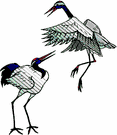Lake Teshekpuk, nursery for many birds at risk
My last post on the sound recordings by Cornell Lab of Ornithology on Alaska's North Slope leads to another NPR program "Oil or birds", also about Alaska's North Slope. Some of you may have heard of Teshekpuk Lake, one of the most important breeding areas in the Arctic, where the Bureau of Land Management has renewed it's efforts to drill for oil (National Audubon Society successfully sued them last year to stop the drilling until they did an environmental impact statement). This is a very sensitive area with vast vital wetlands important to many bird species including birds we see in Colorado such as Long-tailed Duck and Yellow-billed Loon. You can read the transcript of the program or listen to it at NPR online
As important as it is for birders to take action to support conservation of habitat in Colorado, it is also important to help protect those species we are priviledged to observe that breed in the Arctic including at Teshekpuk Lake. Those of you who are parents and grandparents will hopefully put forth a special effort to help ensure that a diversity of bird species survive so future generations can enjoy them. You can read more about this issue at Audubon Alaska . Do you have 10 minutes to help save nesting grounds for all the birds listed above and dozens more? Send comments opposing opening Teshekpuk Lake to oil drilling--see options to send comments including a web form on BLM's website(comments due Oct 23). The full draft EIS is available at that site though it will take more than 10 minutes to read. Or just click on the banner for the SaveTLake.org below to fill out an easy form. SeEtta


Labels: Lake Teshekpuk

















